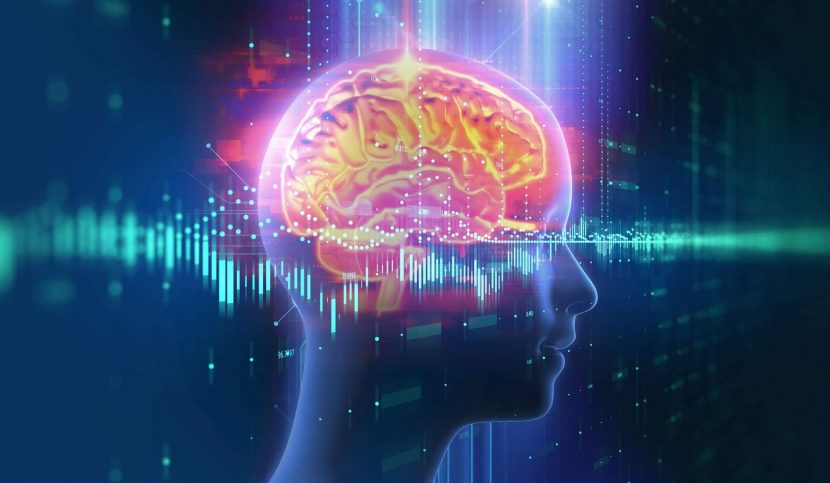Within the walls of the Pitié-Salpêtrière AP-HP hospital, where Charcot explored hypnosis at the end of the 19th century, the research team led by Professor Lionel Naccache at the Paris Brain Institute (Inserm/CNRS/Sorbonne University), has just reported an original observation that sheds light on the cerebral and psychological mechanisms of hypnotic suggestion. This research work has just been published in the journal Frontiers in Neuroscience.
Hypnotic suggestion can voluntarily induce a wide range of conscious mental states in an individual and can be used both in research on the biology of consciousness and in therapy where it can, for example, reduce the painful experience associated with surgery in a conscious subject.
In this work, first authored by neuroscience PhD student Esteban Munoz-Musat, the authors induced transient deafness in a healthy woman while dissecting the brain stages of her auditory perception using the high-density electroencephalography (EEG) technique, which allows the dynamics of brain function to be tracked at the fine scale of a thousandth of a second.
The researchers recorded the brain activity of the volunteer in normal and hypnotic deafness situations. They formulated the following three predictions, which derive from the known cerebral mechanisms of auditory perception and from the theory of the global conscious neuronal workspace developed since 2001 by Stanislas Dehaene, Jean-Pierre Changeux and Lionel Naccache:
- The early cortical stages of the perception of an auditory stimulus should be preserved during hypnotic deafness;
- Hypnotic deafness should be associated with a total disappearance of the P300 that signals the entry of auditory information into the global conscious neural space;
- This block should be associated with an inhibitory mechanism voluntarily triggered by the individual who agrees to follow the hypnotic induction instruction.
Remarkably detailed and extensive analyses of this volunteer’s brain activity confirmed all three predictions and highlighted the likely involvement of a frontal lobe region known for its inhibitory role: the anterior cingulate cortex.
The research team was then able to propose a precise brain scenario for the phenomenon of hypnotic induction that specifically affects the stages of awareness while preserving the early unconscious stages of perception.
This original work provides an important proof of concept and will be extended to a larger group of individuals. In addition to their importance for biological theories of consciousness and subjectivity, these results also open therapeutic perspectives not only in the field of medical hypnosis, but also in the related field of functional neurological disorders which are very frequent (nearly 20% of neurological emergencies), and in which patients suffer from disabling symptoms. These symptoms are often sensitive to hypnotic induction and seem to share several key factors with hypnosis.
Summary of the physiology of auditory perception
The significance and scope of these results require the following reminder: the auditory perception of an external stimulus begins in the inner ear where the variations in air pressure induced by this sound are converted into electrical impulses, then continues in the various neural relays of the auditory pathways before reaching the auditory cortex at around 15 milliseconds. From this entry into the cortex, auditory perception follows three main serial stages that can be identified using functional neuroimaging tools such as the EEG.
First, the so-called primary auditory regions actively construct a mental map of the acoustic characteristics of the perceived sound. This first stage can be identified by a brain wave (the P1 wave which occurs less than 100 thousandths of a second after the sound). Then primary and secondary auditory regions that calculate in real time the statistical regularities of the auditory scene on the scale of the elapsed second – and which therefore anticipate what the following sounds should be – detect to what extent this stimulus transgresses their predictions.
This second stage is identifiable by a brain wave discovered in the late 1970s: the MMN (MisMatch Negativity) (around 120 and 200 milliseconds). Finally, around 250-300 milliseconds after the sound, the neuronal representation of the auditory stimulus reaches a vast cerebral network that extends between the anterior (prefrontal) and posterior (parietal) regions of the brain.
Crucially, whereas the first two cortical stages of auditory perception operate unconsciously, the P300 is the signature of the subjective awareness of that sound, which then becomes relatable to oneself: “I hear sound X”.
Source
Esteban Munoz Musat, Benjamin Rohaut, Aude Sangare, Jean-Marc Benhaiem and Lionel Naccache
Frontiers in Neuroscience, 17th March 2022.
DOI : 10.3389/fnins.2022.756651







